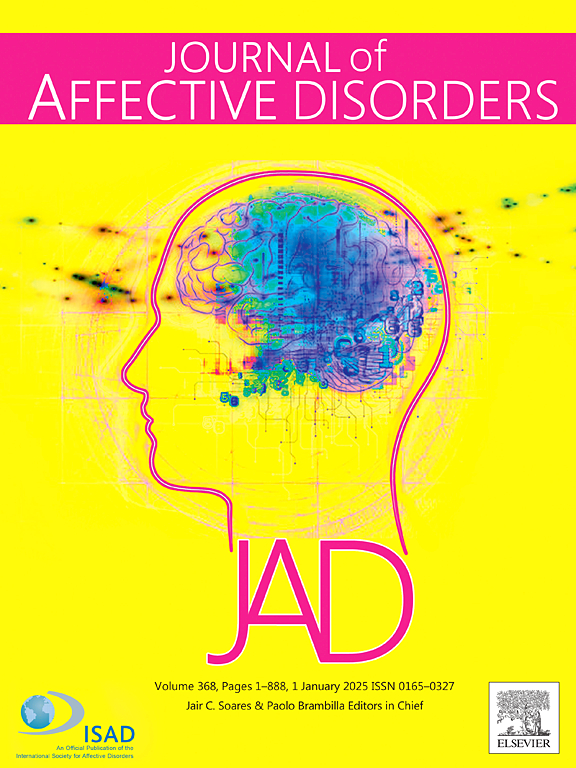Exploring the relationship between atenolol use and depression: A network pharmacology approach using NHANES data
IF 4.9
2区 医学
Q1 CLINICAL NEUROLOGY
引用次数: 0
Abstract
Background
Atenolol, a β-blocker, offers significant cardiovascular benefits, but its potential association with depression remains unclear.
Objective
The goal of this study is to investigate the relationship between atenolol use and depression, exploring underlying mechanisms through network pharmacology.
Method
Data from 11,057 adult participants in the NHANES database (2005–2018) were analyzed. Participants were categorized by their use of atenolol, and depression levels were evaluated using the PHQ-9 scale. Logistic regression was used to analyze the association between atenolol use and depression. Additionally, network pharmacology methods were used to identify potential targets and pathways related to the neuropsychiatric effects of atenolol.
Results
A significant link was observed between atenolol use and depression (OR = 2.02, 95 % CI: 1.13–3.59) in the fully adjusted model, with a stronger association in the 40–64 years age group. Network pharmacology identified 19 core targets related to depression, including MAOB, ADRB2, DRD2, and SLC6A3, which showed strong binding affinities with atenolol. Enrichment analysis suggested that atenolol may influence the onset of depression by modulating biological processes such as G protein-coupled receptor signaling and monoamine transport.
Conclusions
Our findings indicate a positive correlation between atenolol use and depression, particularly among individuals in the middle-aged demographic. It is important to monitor the mental health of patients when prescribing atenolol.
探索阿替洛尔使用与抑郁症之间的关系:使用NHANES数据的网络药理学方法。
背景:阿替洛尔是一种β受体阻滞剂,具有显著的心血管益处,但其与抑郁症的潜在关联尚不清楚。目的:通过网络药理学研究阿替洛尔与抑郁症的关系,探讨其作用机制。方法:分析NHANES数据库(2005-2018)中11057名成年参与者的数据。参与者根据阿替洛尔的使用情况进行分类,并使用PHQ-9量表评估抑郁水平。采用Logistic回归分析阿替洛尔使用与抑郁之间的关系。此外,网络药理学方法被用于识别阿替洛尔神经精神作用的潜在靶点和通路。结果:在完全调整后的模型中,阿替洛尔使用与抑郁之间存在显著联系(OR = 2.02,95% % CI: 1.13-3.59),在40-64岁 年龄组中相关性更强。网络药理学鉴定出19个与抑郁症相关的核心靶点,包括MAOB、ADRB2、DRD2和SLC6A3,这些靶点与阿替洛尔表现出较强的结合亲和力。富集分析表明,阿替洛尔可能通过调节G蛋白偶联受体信号传导和单胺转运等生物过程影响抑郁症的发生。结论:我们的研究结果表明阿替洛尔的使用与抑郁症之间存在正相关,特别是在中年人中。在开阿替洛尔处方时,监测患者的心理健康状况是很重要的。
本文章由计算机程序翻译,如有差异,请以英文原文为准。
求助全文
约1分钟内获得全文
求助全文
来源期刊

Journal of affective disorders
医学-精神病学
CiteScore
10.90
自引率
6.10%
发文量
1319
审稿时长
9.3 weeks
期刊介绍:
The Journal of Affective Disorders publishes papers concerned with affective disorders in the widest sense: depression, mania, mood spectrum, emotions and personality, anxiety and stress. It is interdisciplinary and aims to bring together different approaches for a diverse readership. Top quality papers will be accepted dealing with any aspect of affective disorders, including neuroimaging, cognitive neurosciences, genetics, molecular biology, experimental and clinical neurosciences, pharmacology, neuroimmunoendocrinology, intervention and treatment trials.
 求助内容:
求助内容: 应助结果提醒方式:
应助结果提醒方式:


